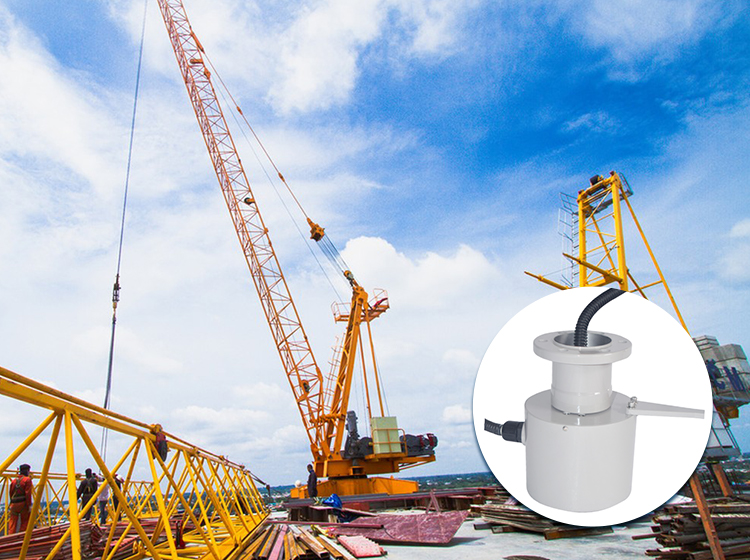In this article, you will understand the of slip ring application in crawler cranes, their key benefits, challenges, and mitigation strategies. The adoption of slip rings enhances the operational efficiency of crawler cranes, and the reader will gain significant insight from well-analyzed case studies. You will also learn about future trends in slip ring applications and how to choose the right manufacturer for your needs.
Introduction to Slip Ring Application in Crawler Cranes
This introduction serves as a springboard into the world of heavy lifting machinery, in particular crawler cranes, and the substantial part slip rings have in their fundamental operations. Both slip rings and crawler cranes, despite their distinct characteristics, form an interdependent relationship, critical to the functionality and output of these mighty machines.
Slip rings, also known as rotary electrical interfaces or electrical rotary joints, are devices used in systems that require unrestrained, continuous rotation while transferring power and data from a stationary to a rotating structure. They are engineered to improve mechanical performance, simplify system operations, and eliminate damage-prone wires dangling from movable joints.
On the other hand, crawler cranes, featuring track systems and prodigious lifting capacities, are essential fixtures in construction operations. These heavy-duty machines are capable of accomplishing tremendous tasks, from lifting steel beams onto skyscrapers to hauling massive concrete slabs during the construction of infrastructure projects.
At first glance, the connection between slip rings and crawler cranes may not seem apparent. However, delve a level deeper, and the affinity is indisputable. The uninterrupted operation of a crawler crane relies significantly on the application of slip rings. Central to the crane’s performance, slip rings ensure a stable, consistent flow of electrical power and data signals throughout the machinery. This connection enables moving parts of the crane, especially the revolving superstructure, to rotate freely without the entanglement or breakage of crucial electrical cables and connections.
This article delves into the applications, benefits, types, and future trends of slip ring applications in crawler cranes to give readers a holistic understanding of their pivotal role in the asset’s performance and the impact they have on enhancing operational efficiency. This topic is of significant importance, given the increasing reliance on crawler cranes in constructing the grand infrastructure feats observed in the modern world. Thus, this discussion contributes not only to a deeper understanding of crawler crane operations for professionals in the field but also to an appreciation of the complexity of such machinery for the curious extrapolators.
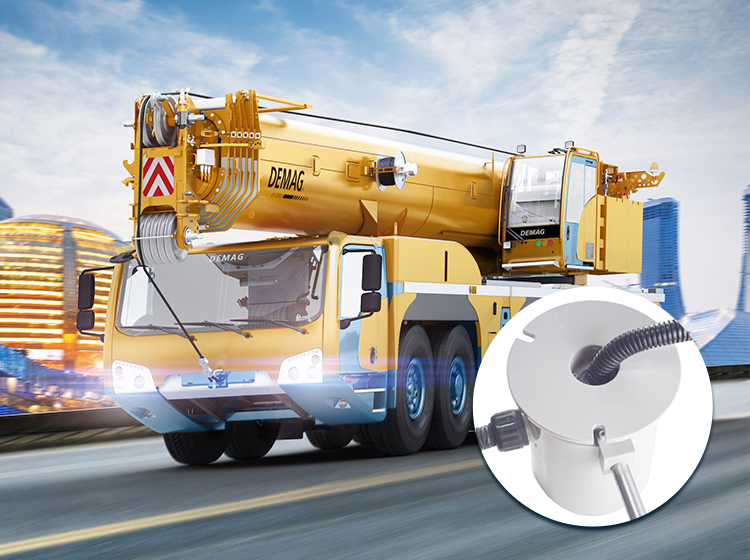
Deciphering Slip Ring Application in Crawler Cranes
To comprehend the intricate collaboration between slip rings and crawler cranes, it is essential first to grasp what slip rings are and how they function. As we delve into this topic, we will shed light on their working mechanics and demonstrate how they contribute to the seamless operation of crawler cranes by facilitating uninterrupted electrical power and signal transmission.
Slip rings, also known as rotary electrical interfaces, electrical rotary joints, or collectors, are electromechanical devices that serve a critical function in systems requiring continuous rotation while transferring power and electric signals from stationary to rotating parts. This is tantamount to the application of a variety of industrial machinery and equipment, most notably, crawler cranes.
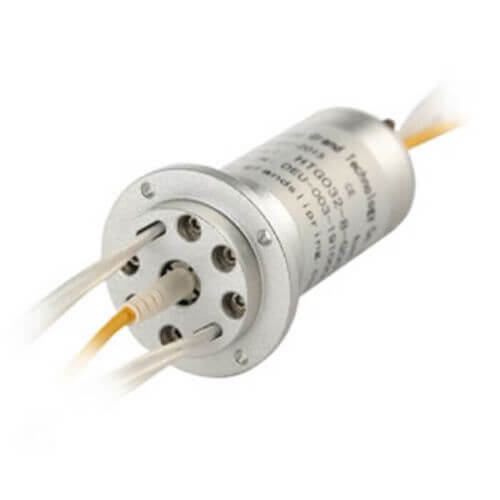
In essence, a slip ring comprises two main components: the stationary graphite or metal contact (brush) and the rotating ring. As the ring rotates, the brush maintains constant contact, permitting power and signal transfer across the rotary interface. This simplifies the overall system operation, improving mechanical performance, and eliminating the need for dangling wires that become prone to damage and entanglement over time.
In the context of crawler cranes, which are dynamic with moving parts, slip rings play an indispensable role. A common characteristic of crawler cranes entails the crane’s upper structure — carrying the boom and the load — revolving atop the lower structure that remains stationary and moves linearly along tracks. Given this setup, there’s an inherent need for continuous 360-degree rotation while maintaining seamless transmission of power and signal across the two separate units. This is where slip rings come into play.
The crane’s electrical system, including powering the motor, the sensors, and the communication lines vital for crane controls, relies heavily on slip rings. Thanks to the flawless electrical contacts facilitated by the slip rings, power, and signal transmission suffer no interruption when the crane rotates.
This ensures the various crane components do not lose their functionality during operation and also circumvents the risk of cable twisting or breakage that would otherwise be a persistent problem due to continuous rotation. Understanding this complex interplay between slip rings and crane operation paves the way towards appreciating the benefits they bring to the crane’s operation and effectively addressing the challenges.
The Mechanics of Crawler Cranes: An Examination of Slip Ring Integration and Need
Understanding the role of slip rings necessitates a deep comprehension of crawler crane mechanics and operation principles. A closer examination of this interplay not only uncovers the integration points of slip rings but also outlines their necessity for the crane’s efficient functioning.
Crawler cranes are marvels of modern mechanical engineering, characterized by their excellent stability and the ability to maneuver heavy loads with precision. These machines consist of two primary components: the lower carriage (or crawler) and the upper rotating superstructure. On the startup of a crawler crane, the operator uses the control system (either through manual controls or digital systems) to move and direct the crane, which utilizes a mix of hydraulic and electric systems.
The lower crawler houses the track system that enables the crane to move on various terrains. It remains stationary during the lifting process to provide stability. Meanwhile, the upper carriage includes the working arm or ‘boom,’ the engine, the operating cabin, and the lifting equipment. The crane’s 360-degree range operation, the load management, and the communication between the upper and lower carriages hinge on the slip ring’s strategic placement and reliable operation.
The revolving superstructure’s rotation, along with the functional integrity of the boom and lifting equipment, is predicated on electrical power. This power, supplied via cables from the generator in the stationary lower carriage, has to traverse the rotating joint between the two units. Here, slip rings come into play. They facilitate this power flow from the stationary part to the rotating part without impediment, avoiding the risk of cables twisting or breaking during the crane’s operation.
Furthermore, modern crawler cranes incorporate various sensors and control systems for improved safety and operational efficiency. These systems necessitate not just power but also continuous signal transmission between different units. Again, slip rings satisfy these needs, serving as the crucial link enabling the transfer of data between the stationary and rotating parts.
The application of slip rings in crawler cranes is not a mere accessory but a fundamental necessity. Their role guarantees the stable and seamless flow of power and signals, ensuring the crane’s regular functioning and enhancing its operational efficiency.
Advantages of Integrating Slip Rings into Crawler Cranes
Incorporating slip rings into crawler crane design provides a multitude of advantages that fundamentally improve crane operations, including but not limited to mitigating cable damage, reducing maintenance and associated downtime, and significantly enhancing operational efficiency. Delving into these specifics can thus offer a heightened appreciation of why slip rings are crucial to crawler cranes’ comprehensive functionality.
Minimization of Cable Damage
Traditionally, electrical power and signals’ transition from stationary to rotational parts was achieved through hanging cables. However, this method remains prone to significant issues. Continuous rotation could lead to twisting and damage to these cables, causing hindrance in power and signal flow. With integrated slip rings, this problem is effectively mitigated. Slip rings allow for uninterrupted 360-degree rotation without causing cable entanglement or breakage. The brush-and-ring connection within the slip ring guarantees a constant and consistent transfer of electrical power and data, dramatically reducing cable damage and, by extension, the costs associated with cable replacement.
Reduced Maintenance and Downtime
Damaged or entangled cables can lead to unforeseen operational downtimes, needed both for detecting the issue and for maintenance or parts replacement. Since slip rings reduce cable damage, they inherently cut down the frequency of such unplanned downtimes. Furthermore, the robust construction and materials used in slip ring manufacture contribute to their longevity, reducing the need for regular replacements. A less frequent maintenance schedule frees up more time for actual operations, boosting productivity and cost-effectiveness in any construction or cargo-handling endeavor.
Enhanced Operational Efficiency
The quintessential role of a slip ring is to guarantee an uninterrupted flow of power and signals between a stationary and a rotating part. In the context of a crawler crane, this equates to the ceaseless operation of heavy machinery regardless of its rotational movement. With power to the motor and signals to the control system consistently maintained, the crane can function smoothly. Slip rings enable the seamless operation of various moving parts and systems, eliminating potential hurdles due to power or signal loss. This efficiency creates more fluid, reliable, and streamlined operations, consequently increasing the crane’s overall output.
In conclusion, understanding the context of these advantages underscores the significant role that slip rings play in the overall functionality of crawler cranes. They solve substantial operational challenges, minimize potential downtimes, and enhance work efficiency and productivity, making them indispensable components in modern crawler crane design.
Types of Slip Rings for Crawler Cranes
Although slip rings are universally crucial for 360-degree rotation in crawler cranes, different types of slip rings are tailored to meet various operational demands. These types entail unique characteristics, varied in their design, material, and application; each offers a unique solution for different operational needs.
Traditional Slip Rings
The traditional slip ring employs the common brush and metal ring design. Typically, they use a metal ring and graphite or metal brushes that maintain their electrical contact as the ring rotates. While these slip rings serve the central role of enabling power and signal transmission between the stationary and rotating parts, possible wear-and-tear of the brushes due to friction may necessitate periodic maintenance and replacements. They’re often opted for in basic crane operations where heavy data transfer is not required.
Mercury Wetted Slip Rings
Mercury-wetted slip rings are a specialized variant where liquid mercury is used as an electrical contact instead of a brush. The role of mercury is to confer improved electrical conductivity and minimal contact resistance. These slip rings’ main advantage is their ability to enable low noise, making them ideal for transmitting weak signals. However, safety restrictions linked to mercury and its potential environmental impact are noteworthy considerations.
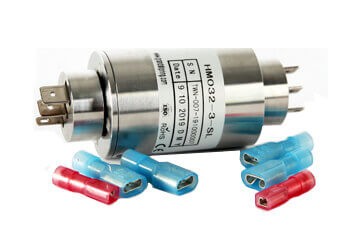
High-frequency Slip Rings
These slip rings are specifically designed to facilitate high-frequency signal transmission. In modern crawler cranes equipped with comprehensive digital control systems, high-frequency slip rings find their application. They are beneficial for digital signal processing, enhancing data and signal transmission capacities.
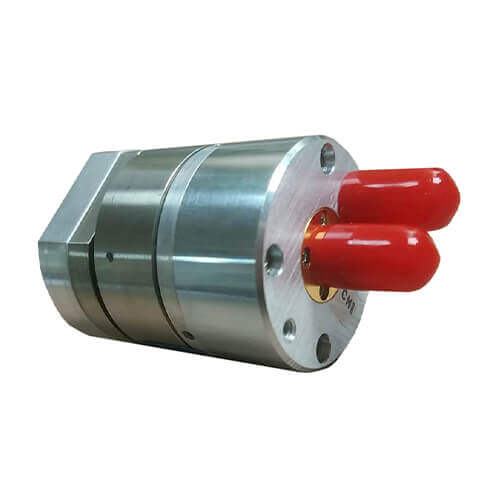
Fiber Optic Rotary Joints (FORJs)
Advanced technology in slip rings brings forth Fiber Optic Rotary Joints (FORJs). As crawler cranes incorporate more advanced sensors and controls, the need for transmitting large volumes of high-speed data increases. FORJs come in handy for such applications as they allow the transmission of data via optical fibers, supporting high-speed data transmissions with negligible signal loss.
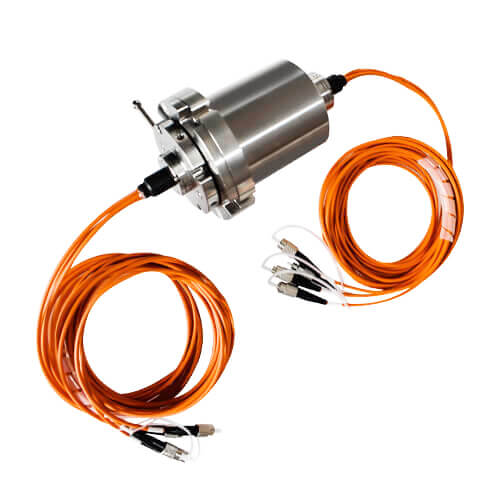
Capsule Slip Rings
They are relatively compact compared to other types and are designed for devices with limited space. Despite their size, capsule slip rings can transmit a multitude of signals and power, making them suited for crawler cranes with compact configurations.
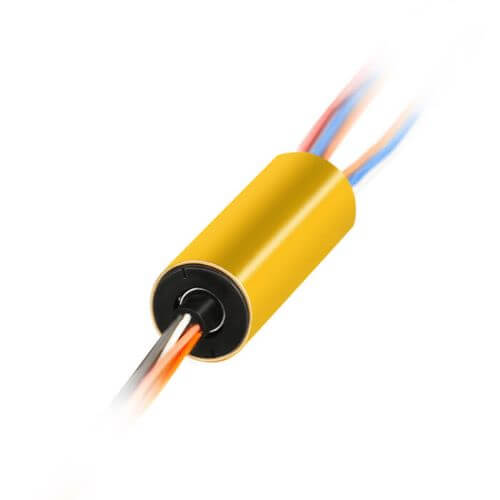
Selecting a slip ring type for a crawler crane is largely dependent on its intended application and sophistication level. Various considerations, such as the amount of data or type of signals to be transmitted, the crane’s physical space, maintenance schedule, and safety factors, play a pivotal role in determining which type of slip ring authentically matches the crane’s operational needs. In conclusion, the array of slip ring types presents an array of solutions that fit diverse crane requirements, thus maintaining their salient role in crawler crane functionality.
Slip Ring Application in Crawler Cranes: Challenges and Mitigation Strategies
While the integration of slip rings into crawler cranes promises a multitude of benefits, it’s not devoid of challenges. These challenges range from wear and tear, and environmental influences, to signal distortions. Understanding these challenges and implementing sound strategies for their mitigation ensures slip ring technology remains beneficial in the dynamic environment of crane operations.
Wear and Tear
The most common issue with traditional slip rings relates to the wear and tear of brushes due to constant physical contact with the ring. Over time, this friction can cause degradation, leading to compromised power or signal transmission. This is particularly pronounced in hostile operational environments subjected to dust and temperature variations.
Mitigation Strategy: This issue can be addressed through regular inspection and preventive maintenance of the slip rings to ensure they remain in good working condition. Moreover, including redundancy in the design or employing brushless designs, such as Mercury Wetted or FORJs, can reduce these concerns.
Environmental Impact
Crawler cranes often operate under harsh environmental conditions. Extreme temperatures, dust, moisture, and other contaminants can potentially interfere with the slip ring operation, affecting the quality of power and signal transmission.
Mitigation Strategy: To tackle this concern, choosing slip rings with robust sealing and bearing designs capable of withstanding adverse environmental conditions is key. Additionally, it may help to incorporate slip rings designed with materials resistant to corrosion and extreme temperatures.
Signal Interference
Because slip rings transmit power and signals concurrently, there’s a risk of electromagnetic interference (EMI), where the power transmission interferes with the signal transmission, leading to signal distortions.
Mitigation Strategy: This interference can be minimized by using shielded cables, segregating power and signal lines within the slip ring assembly, or using separate slip rings for power and signal transmissions. High-frequency slip rings and FORJs are excellent choices when mitigating such signal distortions, delivering clear and high-speed data transmission functionality.
Space Constraints
An additional challenge arises when implementing slip rings into the existing design of cranes with strict space constraints, which can limit the types and sizes of slip rings that can be integrated.
Mitigation Strategy: Capsule slip rings provide a solution for such scenarios. Despite their compact size, they can transmit various signals simultaneously and are readily applied in tight spaces without compromising on their functionality.
In the face of these challenges, technological advancements, careful selection, and thoughtful maintenance strategies ensure that slip rings continue to play their vital role in powering the seamless, rotational operation of crawler cranes. The objective is, thus, to ensure the limitations are outpaced by the benefits, leading the crane’s operations to new heights of efficiency and productivity.
Showcase of Success: Case Studies on Successful Slip Ring Integration in Crawler Cranes
The integration of slip rings in crawler cranes has been a game-changer in numerous industries. Ranging from the construction domain to offshore operations, slip rings’ unique contribution has significantly impacted the crane’s functionality. Here are a few exemplary case studies that underscore this statement.
Sky High Construction
In a crucial construction project at New York’s One World Trade Center, one of the world’s tallest buildings, slip rings played a pivotal role. Slip rings were employed in the tower crane’s design, used for lifting heavy construction materials at a height of over 1,300 feet. The slip rings facilitated continuous rotation of the crane without causing any cable twisting, ensuring smooth and efficient operations at an extreme height. The building’s completion stands as a testament to the effectiveness of slip rings.
Wind Energy Sector
In an offshore wind farm project in the North Sea, an immense demand was placed on the crawler crane’s mobility and load capacity. Furthermore, the crane had to endure harsh weather conditions and corrosive sea spray. To aid in overcoming these challenges, high-frequency and sealed slip rings were integrated into the crane design. This enhancement ensured the crane’s uninterrupted operation under severe conditions while maintaining optimal power and data transmission between the crane’s stationary and rotating parts.
Arctic Adventure
A mining project in the Arctic witnessed the robustness of slip rings in extremely cold temperatures. Traditional slip rings could be hampered by freezing temperatures that can cause stiffening and subsequent damage. To face this challenge, the crawler crane was equipped with specially designed slip rings possessing freeze-resistant features and materials. The slip rings played an invaluable role in the project’s smooth operations, proving their resilience in hostile climatic conditions.
Automotive Manufacturing Sector
In a leading automotive factory, crawler cranes employed in the chassis assembly line faced the recurring issue of downtime due to twisted cables. This issue was adeptly tackled by integrating capsule slip rings, ideal for the limited space available. The introduction of these slip rings eliminated the risk of cable entanglement, effectively reducing downtime and significantly increasing the factory’s productivity and efficiency.
In conclusion, the implementation of slip rings in a plethora of contexts has yielded successful results. With their capacity to uphold constant rotation, maintain power and signal transmission under adverse environments, and fit snugly into confined spaces, slip rings have proven to augment the functionality of crawler cranes across various industries. These case studies serve as powerful reminders of the transformative potential that slip ring technology holds for the world of crawler cranes.
Selecting the Right Manufacturer & Product for Your Crawler Crane’s Slip Rings
Choosing the right manufacturer for your crawler crane’s slip rings is a critical decision that directly impacts your crane’s performance, durability, and overall operational efficiency. Here are a few cardinal factors to consider when making this crucial choice.
Reputation and Track Record
A manufacturer’s reputation is an important barometer of its credibility and reliability. Companies with a robust track record tend to uphold high standards of quality in their products. Look for manufacturers who have a positive presence in the market and have successfully served notable clients or projects. You can garner such information from industry reviews, ratings, client testimonials, and case studies.
Product Quality
The quality of slip rings significantly determines the crane’s functionality. High-quality slip rings promise longer life, reliable power & data transmission, and fewer maintenance requirements. Thus, assess the design integrity, materials used, and the manufacturing processes of the manufacturer’s products. Ensure that they comply with relevant industry standards and certifications, such as ISO, CE, or UL.
After-Sales Service
The level of post-purchase service a manufacturer provides is indicative of their commitment to customer satisfaction. Availability of services like regular maintenance checks, prompt fault rectification, and easy availability of replacement parts are valuable factors. Select manufacturers that provide comprehensive after-sales services to ensure the prolonged operational efficiency of your slip rings.
Technical Support
Effective technical support is crucial in instances of product-related queries or technical issues post-installification. It is instrumental in ensuring the optimal performance of the slip rings and averting operational hitches. Ensure the manufacturer provides reliable technical support, including accessibility to knowledgeable technicians or engineers, availability of comprehensive product manuals, and fast response time.
Customization Capability
Depending on the unique requirements of your crawler crane, customized slip rings might be required over standard models. A manufacturer’s ability to offer customization in terms of design, size, and functionality indicates their proficiency in understanding and catering to unique customer needs.
Cost Considerations
Although cost is a significant factor, it should not compromise product quality. A higher upfront cost for a quality product could result in long-term savings by reducing maintenance costs and downtime. Seek a balance between cost-effectiveness and product quality when choosing a manufacturer.
By taking these factors into account, you can entrust the design and functionality of your slip rings to a credible, quality-driven manufacturer, who will endeavor to provide you with products tailored to your needs. In turn, this will ensure that the slip rings in your crawler cranes maintain the rotation, transmission, and operational efficiency standards at all times.
Future Trends in Slip Rings for Crawler Cranes
The continual advancements in technology promise a transformative future for slip rings in crawler cranes. These innovations aim to overcome existing limitations and enhance the performance, durability, and functionality of slip rings. Here are a few emerging trends that might shape the future of slip rings in this industry.
Nano Technology in Slip Rings
Nanotechnology may bring about revolutionary changes in slip ring design and performance. Nano-materials, with their substantial strength and lightweight properties, could replace traditional materials used in the manufacture of slip rings. This would enhance resistance to wear and tear, boost signal integrity, and increase the life span of slip rings, all contributing to more efficient crane operations.
Wireless Power Transmission
The concept of wireless power transmission has the potential to reinvent the traditional design of slip rings. By eliminating the need for physical contact between brushes and rings, this technology can drastically reduce wear and tear, signal noise, and maintenance requirements. However, implementing this technology will require overcoming challenges linked to efficiency, safety, and practical applicability.
Integrated Sensor Technology
Incorporating sensor technology into slip rings might play a significant role in predictive maintenance. Sensors can continuously monitor the slip rings, identify potential problems before they escalate, and immediately alert the maintenance team, reducing downtime and increasing maintenance efficiency.
AI-based Predictive Analysis
The integration of Artificial Intelligence (AI) could fundamentally transform slip ring maintenance. AI-based predictive analysis can monitor operational patterns, anticipate problems, and propose preventive measures. This advancement could significantly reduce the possibility of unexpected failures, ensuring smoother and more efficient crawler crane operations.
Advanced Materials & Coatings
Future slip rings could benefit from advanced materials and special coatings that enhance their durability, reduce friction, and offer superior protection against environmental hazards. From corrosion-resistant coatings to low-friction materials, these advancements might boost the longevity and overall performance of the slip rings.
Depending on numerous factors, including technology advancements, market demand, and cost considerations, these trends might shape the future of slip rings in crawler cranes, paving the way for improved performance, innovative designs, and more efficient operations.
Conclusion
In conclusion, the application of slip rings in crawler cranes significantly enhances operational efficiency and reduces maintenance load, making them indispensable in the industry.
FAQs about Slip Ring Application in Crawler Cranes
Q: How does the application of slip rings enhance the efficiency of crawler cranes?
A: By enabling smooth power and signal transmission, slip rings help prevent cable tangling, reduce downtime, and enhance overall operational efficiency.
Q: What are some challenges in applying slip rings to crawler cranes?
A: Common challenges include potential wear and tear due to harsh environments and the requirement of regular maintenance. These challenges can be mitigated by choosing high-quality slip rings and maintaining regular checks.
Q: Why are slip rings necessary in crawler cranes?
A: Slip rings are crucial in crawler cranes due to their ability to transfer electrical power and signals between the crane’s stationary and rotating components during the crane’s continuous rotation. By doing so, they mitigate cable entanglement, reduce downtime, and ensure smooth and efficient operations.
Q: What types of slip rings are used in crawler cranes?
A: Various types of slip rings are employed in crawler cranes, depending on the specific requirements of the application. Some commonly used types include through-bore slip rings, capsule slip rings, and pancake slip rings. Each differs in design, size, and functionality to address the unique needs of crawler crane operations.
Q: Can slip rings be customized for crawler cranes?
A: Yes, slip rings can be customized to address the unique requirements of specific crawler crane applications. Customization can include alterations in design, materials, size, and functionality to better match the demands of the crane operations and working environment.
Q: How can I ensure that my slip rings have a long service life?
A: Ensuring the longevity of your slip rings can be achieved through various means. Selecting a high-quality product from a reputable manufacturer, adhering to proper installation and maintenance guidelines, and conducting timely inspections and upgrades contribute to prolonging your slip rings’ service life.
Q: How do I maintain slip rings in crawler cranes?
A: Regular maintenance of slip rings is necessary to ensure optimal performance. This may include routine inspection of brushes, rings, and other components, cleaning the brush and ring contact surfaces, checking for corrosion or worn components, and promptly addressing any issues that arise.
Q: Are there any environmental considerations for slip rings in crawler cranes?
A: Yes, environmental factors play a vital role in selecting and designing slip rings for crawler cranes. The working conditions, including temperature, moisture, dust, or chemical exposure, should be taken into account when selecting slip rings or incorporating appropriate protective measures in their design.
See What We Can Do

